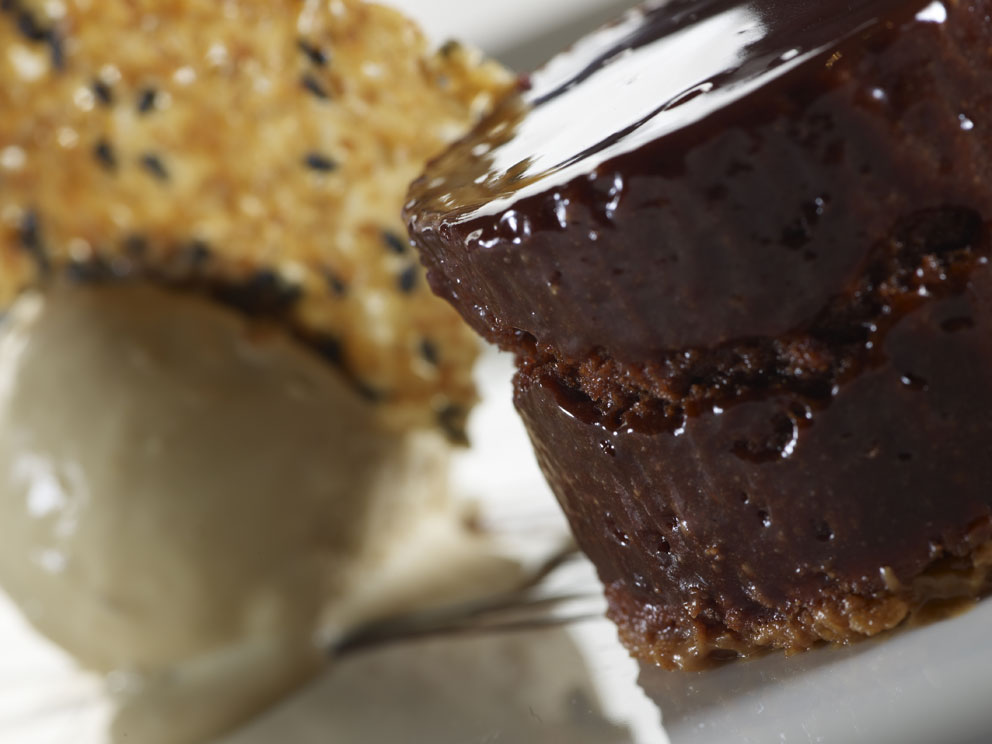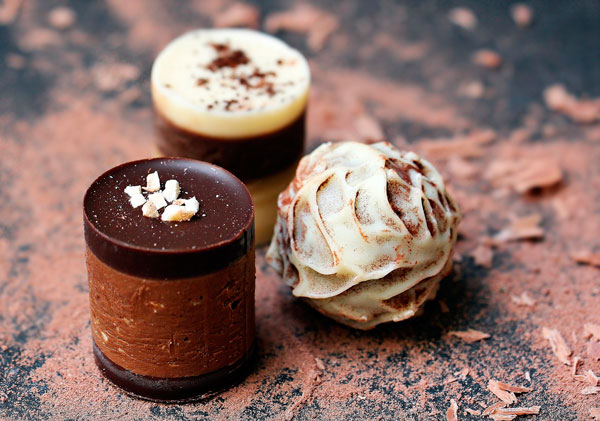First of all, many thanks for taking the time to talk to us. I’ll start by asking if you could briefly tell us a bit about The Kitchen and the involvement of James Martin.
This purpose-built space sets the stage for enjoying and learning about food and cooking. The design is open plan; bi-folding doors and glass panelling flood the rooms with light. Surrounding the building are raised beds and a greenhouse where herbs and vegetables are grown year-round to supply The Kitchen. The Kitchen is a feast for the senses. On any day you’ll find guests and visitors gathering for informal lunches or taking a cookery class, gardeners selecting fresh ingredients or chefs developing this season’s menu.
The Kitchen – Relaxed Dining
The Kitchen provides an informal dining experience with an open plan layout offering you the chance to watch the Chefs at work. The à la carte menu features wood-fired pizzas, gourmet burgers, superfood salads and much more.
The Kitchen – Cookery School
Your day starts with coffee and home baked pastries before a sneak peek at what’s growing in the greenhouse. Stroll through the garden into the cookery school and settle into the workstation that is exclusively yours for the day. Spend time seated around the Chef Tutor’s station, where you will learn new skills before creating your own masterpiece under the watchful eye of the Chef. Day courses with our Chef Tutor run from 9.30am – 4 pm. Prices start from £155 and include refreshments, lunch, all equipment and ingredients.
What kind of different food options are there available to learn?
There is something for everyone whatever their interest whether it is to learn a specific skill with fish, steak cooking or bread or a type of world cuisine on classes like our Journey Through Asia and Morocco to the Middle East. And of course, we share the secrets behind long standing favourite recipe served at Chewton Glen for years on our Recreate Chewton Glen Classics class.
For a beginner to intermediate cook, what kind of dishes would you recommend starting off learning?
Cooking should be about enjoying the experience so for any level of home cook learn new recipes that appeal to you. They might have a skill or flavour combination you have never tried before, the more interested you are in the dish, the easier it will be. Also, most recipes can be viewed as a guideline rather than strict rules… well apart from Patisserie recipes that is!
If you had to pick some top skills every cook should know, what would they be?
How to tell if a piece of meat, chicken or fish is cooked is crucial. Knife skills for chopping as this will help you speed through most recipes and give you better end results.
Could you describe for us your perfect meal for each season?
Whatever feels right at the time is the simplest answer, as during each season not only the weather changes a lot but also the ingredients. It’s probably easier to pick out dishes that really represent a season. In winter it’s got to be comfort food like a great sticky toffee pudding. Coming into spring things are starting to lighten up even if there is a slight chill in the air, this is when rhubarb really comes into its own whether it’s a warming crumble or made into a delicious chutney to enjoy throughout the year. Then summer, that’s a really difficult one to pick with so much produce available, but really it has to be all about amazing British strawberries with a splash of cream watching Wimbledon. Autumn brings out the best from the hedgerows and I love cooking down apples and blackberries, popping into some puff pastry and create an apple and blackberry turnover, perfect with a coffee as the days draw in.
Do you have some top tips when it comes to cooking seafood?
If cooking a fish fillet with its skin on cook it for ¾ of the time on the skin side until crisp, then switch off the heat and flip over to the other side and the residual heat in the pan will finish off the cooking without drying it out.
What healthy and nutritious ingredients would you always recommend?
Rather than recommending ingredients it’s all about balance and looking at what you are trying to achieve. Grains and pulses release their energy more slowly benefiting you for longer rather than sugary spikes and then crashes leaving you feel tired. Quinoa is an ancient grain that can be used in sweet and savoury recipes, is really versatile and high in protein.
What flavours and spices do you normally put into your Middle Eastern dishes?
In term of stocking up your store cupboard ready to cook Middle Eastern food I would recommend getting sumac (a slightly sour dried berry powder), baharat and za’atar spice blend and also a bottle of pomegranate molasses. Whilst we make our own harissa there are some great ready made ones out there to buy. Also rose and orange blossom are used in sweet and savoury dishes.
Not everyone has a sweet tooth; what savoury desserts would you cook up for them?
We work very closely with a number of local cheese suppliers and we find that people love to enjoy a cheese course after dinner. Alternatively, we can offer a delicious cheese soufflé (which you can learn to cook on our Recreate Chewton Glen Classics course) or a tasty Welsh rarebit.
If you were throwing a dinner party and each course was from a different culture – what would be your perfect selections?
A Thai starter (they have so many delicious small bites), British for the fish course (we have some of the finest seafood in the world with chefs and recipes to match!), Middle Easter for main (it’s an area of food that is really on the up in the UK at the moment with exciting flavour combinations and vibrant colours), dessert would be from our friends across the pond in the USA
Find more cooking tips here on The Master Chefs.



